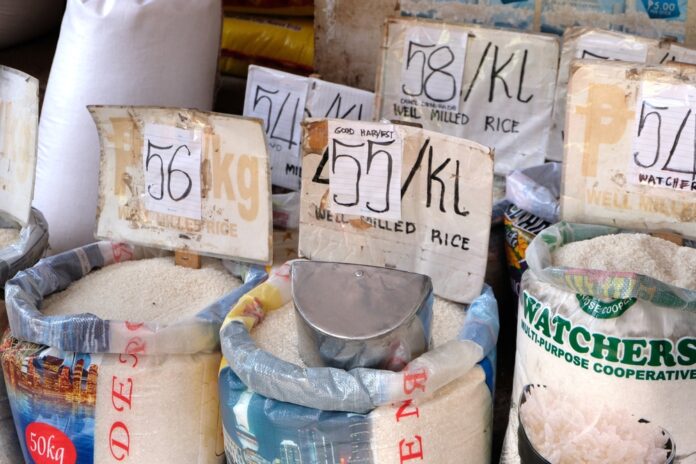Food-driven price pressures figure high in some of this year’s inflation forecasts, such as that seen by the Metropolitan Bank and Trust Co. (Metrobank) which has retained its original 4.3 percent inflation print in 2024.
This developed as headline inflation in 2023 stood well above the central bank’s 2 to 4 percent target range averaging 6 percent instead.
According to Metrobank, while food price pressures in the Philippines have receded, the risk for the price of services or goods to remain in the upper forecast ranges persists, particularly on the rice staple that in some estimates was as high as 15.4 million metric tons last year.
“Our above-target baseline forecast for 2024 remains largely driven by the risk of upward pressure on rice prices, given that exporting countries , particularly, Thailand and Vietnam, have cited that dry spells and flash floods last year have led to a forecast fall in crops through to 2024,” its analysts said.
Metrobank noted that rice inflation in the December 2023 survey actually averaged higher at 19.6 percent from only 15.9 percent the previous November and the highest since March 2009 when this averaged 22 percent.
“Rice inflation in December tracked the pick-up in Asian rice export benchmark prices—Thai rice prices rose to USD659 per metric ton as of end-December (from USD640 per metric ton in November) while the Vietnamese rice prices rose to USD632.90 per metric ton (from USD629.41 per metric ton in November). Both benchmarks are at year-to-date highs,” its analysts said.
In their view, headline inflation were to remain above the Bangko Sentral ng Pilipinas’s target range of 2 to 4 percent not only this year but even beyond.
While this could prove the case, Metrobank analysts nevertheless said other non-volatile commodity prices best indicated by lower core inflation outcome of only 4.4 percent in December last year from 4.7 percent in November help make the case for the BSP to lower its policy rate as soon as June this year.
This has reference to the BSP forecast of moderating price pressures in the months ahead resulting from the easing of supply-side price pressures and negative base effects.
“While our estimates show that headline inflation will remain above the BSP’s target band from 2Q2024 onwards, we think that dissipating price pressures in other non-volatile commodity prices as indicated by the move lower in core inflation (from 4.7% in November to 4.4% in December), will make the case for the BSP to consider lowering rates as early as June,” Metrobank analysts said.
“We think that policy rates may not need to be as restrictive as current levels throughout the year, especially if core inflation continues to move lower, as the average difference between the BSP policy rate and domestic headline
inflation (from 2009-2023) has been at 28 bps vs. 260bps currently,” the analysts added.
The BSP’s benchmark interest rate has stood unchanged the past two rate-setting cycles at 6.5 percent in keeping with market forecasts as commodities prices ease.
In November last year, headline inflation fell to only 4.1 percent from 4.9 percent the previous month, moving closer to the BSP’s 2 to 4 percent target corridor.
Weather experts have reported the Philippines having a farm output-disruptive El Nino episode from the fourth quarter of 2018 to the third quarter the following year and another ongoing episode seen lasting till March or April this year.







